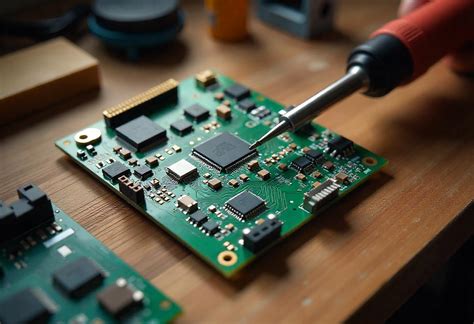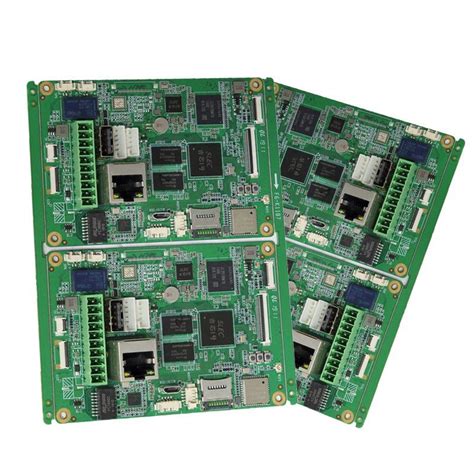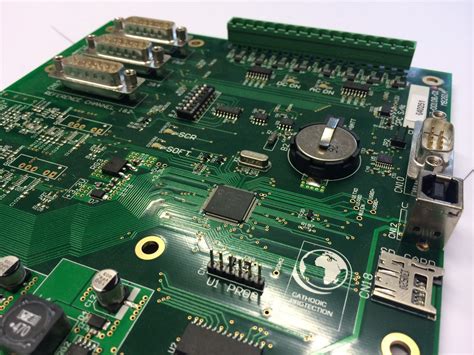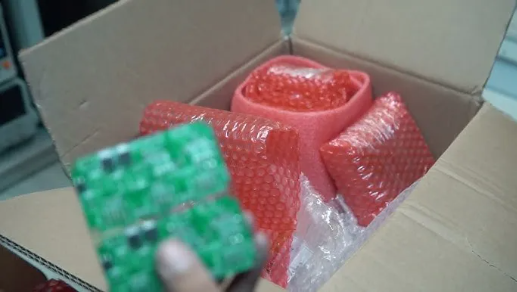The True Cost of PCB Manufacturing Equipment: What to Expect
Key Takeaways
When embarking on your journey into PCB manufacturing, understanding the financial implications associated with equipment is crucial. The PCB manufacturing cost can vary significantly depending on the tools and systems you choose to invest in. For instance, if you are considering starting a pcb manufacturing business, it is essential to budget not only for the initial purchase but also for ongoing expenses related to maintenance and upgrades. A thorough analysis of different PCB manufacturing companies can yield insights into the types of equipment available and their respective costs. Recognizing the role of automation in your production line can also impact your pcb manufacturing cost in the long run, as automated systems often reduce labor costs and increase efficiency. As you plan, keep in mind that a more significant upfront investment in higher-quality equipment may lead to substantial savings once production ramps up, further highlighting the need to make informed decisions at every stage of the buying process.
Introduction to PCB Manufacturing Equipment Costs
In the world of PCB manufacturing, understanding the costs associated with equipment is vital for any business looking to make informed financial decisions. As you venture into the PCB manufacturing business, it’s crucial to consider not just the initial investment but also the ongoing expenses that may arise over time. Various factors contribute to the pcb manufacturing cost, including equipment type, automation level, and the brand of tools you choose. You may find it beneficial to break down these costs into two main categories: upfront costs and operational expenses.
The upfront costs encompass not only the purchase price of machinery but also installation fees and any necessary training for your team. For instance, a simple table outlining these components can help in your budgeting:
| Expense Type | Estimated Cost |
|---|---|
| Equipment Purchase | $50,000 – $500,000 |
| Installation Fees | $5,000 – $20,000 |
| Training | $1,000 – $10,000 |
On top of these initial expenses, ongoing operational costs often include maintenance supplies and power consumption, which are essential to keep your equipment running smoothly. Automation can play a significant role in optimizing these costs; automated systems may have a higher initial cost but can lead to savings in labor and efficiency over time.
“Investing in quality equipment not only enhances production capabilities but also reduces unexpected breakdowns.”
Thus, as you strategize your entry into this competitive industry filled with pcb manufacturing companies, it’s crucial to assess all potential costs methodically. A comprehensive understanding enables you not only to budget effectively but also positions your venture for lasting success in PCB production.
Understanding the Importance of Automation in PCB Manufacturing
In the pcb manufacturing industry, automation plays a pivotal role in enhancing efficiency and consistency across production lines. As you delve into the world of pcb manufacturing companies, it becomes evident that incorporating automation can significantly affect your pcb manufacturing cost. Automated systems reduce the need for manual labor, which not only cuts down on labor costs but also minimizes human error, leading to higher quality output. By investing in automated equipment, you streamline processes such as soldering, inspection, and assembly, ensuring that your products meet industry standards with precision. Furthermore, automation enables a higher production volume in less time, giving your pcb manufacturing business a competitive edge in the market. Ultimately, while the initial investment in automated equipment may seem substantial, the long-term benefits—such as reduced operational costs and increased throughput—make it a strategic choice for any serious player in the pcb manufacturing sector. For more insights into effective solutions for your production needs, explore Andwin PCB.
Budgeting for a PCB Production Line: Key Considerations
When venturing into the pcb manufacturing industry, understanding the associated costs is crucial for ensuring the success of your project. Proper budgeting for a pcb manufacturing production line involves considering several key aspects, including the acquisition of equipment, materials, and labor. You should start by analyzing your specific needs based on your target market and production capacity. This analysis will help you estimate the pcb manufacturing cost accurately, taking into account both initial investments and ongoing expenses. Assessing equipment options is essential; you may choose between manual and automated systems that can have significant differences in cost and efficiency. Moreover, partnering with reputable pcb manufacturing companies can help you secure quality machinery while also providing valuable insight into budgeting best practices and cost-saving strategies. Additionally, consider potential future expansions or upgrades to your pcb manufacturing business, as allocating funds for these purposes now can help you avoid unexpected financial strains later on. Making informed decisions regarding these considerations will set a strong foundation for managing both initial costs and operational efficiency in your PCB production endeavors.
Cost Comparison: Manual vs. Automated Equipment
When considering the pcb manufacturing landscape, one of the most critical decisions you’ll face is choosing between manual and automated equipment. Understanding the pcb manufacturing cost for each of these options can significantly impact your overall budget and production efficiency. Manual equipment typically involves lower initial investments, making it attractive for small-scale operations or startups entering the pcb manufacturing business. However, this option may lead to higher labor costs and increased potential for human error, which can affect quality and consistency.
On the other hand, automated equipment usually demands a higher upfront pcb manufacturing cost, but it can offer substantial long-term savings through increased production speed and reduced labor needs. By investing in automated processes, you position your business to handle larger volumes with precision and efficiency. Additionally, automation can enhance consistency across production runs, minimizing defects that might arise from manual handling.
Ultimately, your choice should align with both your budget constraints and long-term strategic goals. Whether you decide to start with manual equipment or make a leap toward automation, it’s essential to understand how each option fits into the broader context of your financial plans within the competitive realm of pcb manufacturing companies. By thoroughly assessing these differences, you can make an informed decision that best suits your operation’s needs and paves the way for a successful venture in this dynamic industry.
Long-term Savings: Investing in Quality Equipment
When you venture into the pcb manufacturing business, one of the most significant decisions you’ll face is the allocation of your budget for quality equipment. Investing in high-quality pcb manufacturing tools not only enhances production efficiency but also results in substantial long-term savings. Initially, the pcb manufacturing cost associated with premium machinery may seem daunting, yet it’s essential to consider the durability and reliability of these tools. Cheaper alternatives may lead to higher maintenance costs and frequent replacements, creating a cycle of additional expenses that can quickly offset any initial savings. By prioritizing quality, you ensure that your pcb manufacturing companies can deliver consistent output and reduce waste in materials. Furthermore, high-quality equipment generally requires less downtime for repairs and can manage higher production volumes, ultimately boosting your profit margins. Thus, investing wisely in your equipment is a critical factor for sustaining growth and achieving success in the competitive world of pcb manufacturing.
Planning for Maintenance and Upgrades in PCB Manufacturing
In the realm of PCB manufacturing, it is essential to prioritize the maintenance and upgrades of your equipment to ensure efficiency and longevity. As you navigate the complexities of the PCB manufacturing cost, consider establishing a routine maintenance schedule for your machinery. Regular checks can prevent costly downtimes that might arise from unexpected malfunctions, impacting your overall production line. Moreover, keeping up with the latest advancements in technology is critical; investing in upgrades allows you to remain competitive within the market dominated by various PCB manufacturing companies. Evaluate your current equipment’s capabilities versus the enhanced features available through more modern tools and machines. In doing so, you can identify areas where investing in new technology may drastically improve productivity while optimizing costs associated with production processes. Remember, a proactive approach to maintenance not only safeguards your existing investments but also paves the way for an efficient and profitable PCB manufacturing business. By making thoughtful decisions regarding maintenance and upgrades, you are setting solid foundations for long-term success in this dynamic industry.
Conclusion: Strategizing Your Investment in PCB Equipment
In order to make informed decisions regarding your pcb manufacturing venture, it’s crucial to assess all aspects of pcb manufacturing cost. Investing in quality equipment can set the foundation for your success, especially when considering the differences between manual and automated processes. Pay attention to your budget and prioritize expenditures on essential tools that align with your production goals. Additionally, think about the long-term perspective; choosing durable and reliable machines not only enhances productivity but also reduces repair costs over time. Many pcb manufacturing companies have found that while the initial investment may be daunting, the efficiency gains and reduced labor costs associated with automation greatly outweigh the upfront expenses. Analyzing these factors helps you strategize effectively, ensuring that your pcb manufacturing business thrives in a competitive market while maintaining a sustainable financial framework. Remember, a well-thought-out approach to investment in equipment will pay dividends in productivity and profitability for years to come.
Conclusion: Strategizing Your Investment in PCB Equipment
In the journey of establishing your PCB manufacturing business, understanding the pcb manufacturing cost is crucial for making informed decisions about your equipment investments. As you navigate through various pcb manufacturing companies, you will encounter a wide range of pcb manufacturing equipment, each with its unique pricing and functionalities. It is essential to not only consider the upfront costs but also to weigh them against potential long-term savings. Investing in high-quality equipment can significantly reduce operational costs and enhance productivity over time, making it a worthy consideration. Additionally, strategic budgeting for essential tools and automation can help streamline your production line, fostering a more efficient workflow. As you refine your strategies, keep in mind the importance of factoring in maintenance and potential upgrades, ensuring that your investment remains viable as technology advances. By taking these considerations into account, you will be better equipped to make sound investments that align with the goals of your PCB manufacturing venture, setting a solid foundation for future growth and success.
FAQs
What are the typical costs associated with pcb manufacturing equipment?
The costs for pcb manufacturing equipment can vary significantly depending on the complexity and scale of your pcb manufacturing business. You may find that basic equipment starts in the thousands, while advanced automated systems can reach hundreds of thousands.
How do pcb manufacturing companies determine their equipment budget?
When budgeting for pcb manufacturing, it’s crucial to take into account both immediate purchasing costs and ongoing operational expenses, such as maintenance and upgrades.
Is it more cost-effective to invest in automated equipment for pcb manufacturing cost savings?
Investing in automation can lead to significant long-term savings. Although the initial outlay may be higher, automated systems often increase production efficiency and reduce labor costs over time.
What essential tools should I consider for my pcb manufacturing business?
Key tools include PCB printers, etchers, and assembly machines. Each plays a vital role in ensuring your production line operates smoothly and efficiently.
Are there hidden costs in starting a pcb manufacturing provider venture?**
Yes, beyond the initial purchase price of equipment, factor in training staff, facility modifications, and periodic servicing of machinery as part of your overall cost assessment.







